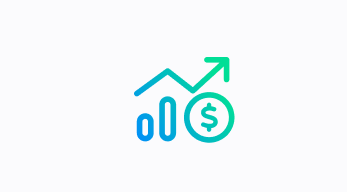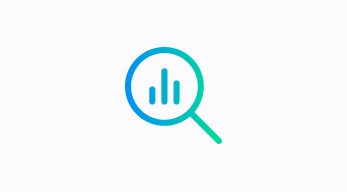
ICIS Chemical Foresight
Gain a competitive edge, with a comprehensive view of your markets
In volatile markets, anticipate change and adapt faster
Confidently plan ahead and benchmark your performance with Foresight, a unique digital solution that seamlessly integrates with your operational systems and processes. Foresight empowers you to compete and negotiate effectively, delivering a clear view of the chemicals value chain, both current and future.
Maximise your competitive edge and unlock limitless possibilities with real-time and forward-looking price and margin data, 24-hour news updates and exclusive insight from over 250 analysts and editors embedded in key chemical markets around the world.
Please visit the Chemicals homepage to see the commodities for which Foresight is available.
RELATED LINKS:

The European chemical industry navigating overcapacity
With global chemical capacity surging, led by China and the Middle East, how will the European chemical industry navigate this evolving landscape?
Compete effectively, with a forward-looking market view

Price forecasts
An expert view on how prices will evolve, up to 18 months ahead.

Margin analytics
Pricing data, market analytics and expert insight in a single, digital solution, with powerful integrated workflow tools such as API, sFTP Excel plugin and Snowflake.

Price assessments and reports
Independent reports on market trends and price history analysis with custom email alerts on price changes, news and outages.

Price history
A comprehensive archive of past prices, revealing historical patterns that inform current and future trends.

Price driver analytics
A unique combination of interactive, analytic tools featuring downloadable charts and impact commentaries from ICIS’ global market experts.

Market analysis
Expert analysis of movements in pricing, supply and demand, changes in regulation and all the issues impacting markets.

Dedicated news channel
Covering the latest news including outages and disruptions, with real-time alerts, all in one place.

Supply and demand data
Identify new sources of supply, save costs and minimise risk through an integrated viewpoint across global and regional markets.

ICIS Foresight – Base Oil Asia-Pacific
Buy, plan and negotiate more effectively with 18-month price forecasts and analytics. Monitor cost pressures and identify early signs of production shifts.
ICIS News
Access our full range of breaking news and analysis.
Idemitsu Kosan, Mitsubishi Corporation announce joint study on low-carbon ammonia
HOUSTON (ICIS)–Idemitsu Kosan and Mitsubishi Corporation announced they have agreed to jointly study the efficient operation of clean ammonia carriers and transshipment terminals. The companies said in a statement this effort will look at ExxonMobil’s planned low-carbon hydrogen and low-carbon ammonia production project in Baytown, Texas, as well as the offtake of ammonia. Further through this combined effort, Idemitsu and Mitsubishi Corporation intend on accelerating their study on structuring a supply chain for low-carbon ammonia which is procured from overseas. Idemitsu, which has established an ammonia import and receiving terminal at its Tokuyama Complex, said it aims to jointly introduce over 1 million short tons of ammonia as fuel and raw materials by 2030 in cooperation with other companies. For its part Mitsubishi Corporation said it is assessing the partial conversion of its Namikata terminal into an ammonia terminal. It is also preparing to build a hub terminal that will supply approximately 1 million short tons of ammonia annually to various industrial applications such as electricity, transportation and chemicals by 2030. Idemitsu and Mitsubishi Corporation said they both plan to supply the low-carbon ammonia volumes produced by this project to Japan through their receiving terminals.
23-Oct-2024
PODCAST: Electric cracker furnace shows power of chemical industry innovation
LONDON (ICIS)–The overall winner of this year’s ICIS Innovation Awards – BASF, Linde and SABIC’s electrically heated steam cracker furnace – could have a massive impact on overall chemical industry emissions if the technology is widely adopted. World’s first electrically heated steam cracker at demonstration stage Cuts CO2 emissions by up to 95% compared with natural gas-fired crackers Tripartite win shows strength of partnerships Challenges include obtaining sufficient renewable energy, financing for scale up Financial risks can be reduced by converting one furnace at a time In this Think Tank podcast, Will Beacham interviews Michael Reitz, technology manager for BASF and Martin Hofstaetter, process engineer for furnace technology at Linde. Register your interest to enter the 2025 ICIS Innovation Awards. Editor’s note: This podcast is an opinion piece. The views expressed are those of the presenter and interviewees, and do not necessarily represent those of ICIS. ICIS is organising regular updates to help the industry understand current market trends. Register here . Read the latest issue of ICIS Chemical Business. Read Paul Hodges and John Richardson's ICIS blogs.
23-Oct-2024
US Sherwin-Williams expects choppy H1, sees signs of consumer weakness
HOUSTON (ICIS)–Sherwin-Williams expects demand during the first half of 2025 will remain choppy while the company waits for what it expects will be an inevitable inflexion point for demand for its products, the US-based paints and coatings producer said on Tuesday. "The single largest variable heading into next year is the timing and pacing of a true inflexion in the demand environment," said Heidi Petz, CEO. She made her comments during an earnings conference call. "It is only a question of when, not if." Until that inflexion comes, Sherwin-Williams expects demand will remain choppy. During the third quarter, demand from consumers undertaking do-it-yourself (DIY) improvement projects remained soft, a trend also noted by RPM International, a company that makes coatings, adhesives and sealants. Sherwin-Williams attributed the softness for its DIY products to weaken existing home sales and inflation. For auto refinish products, insurance claims have fallen because consumers are reluctant to pay deductibles to get their vehicles repaired after accidents, Petz said. PPG also noted a decline in insurance claims. Near term, Sherwin-Williams warned about the possibility that its industrial customers could undergo extend holiday shutdowns. The company did not provide more details. However, US-based paints and coatings producer PPG did note that automobile original equipment manufacturers (OEMs) started taking unscheduled and prolonged downtime in the third quarter, and the trend should continue in the fourth quarter. DEMAND FROM HURRICANE REPAIRSHurricanes initially lower demand because they shut down paint stores and customers cannot immediately return to work. Ultimately, demand does rise after customers assess damage and pursue insurance claims. After about four weeks, demand for primers increases, Sherwin-Williams said. Sundries and paint then follow. Forecasting the effects of Hurricanes Helene and Milton are difficult because they hit weeks apart in the third and fourth quarters. TALK OF RENOVATION RESURGENCELonger term, the US could see a resurgence of home renovation projects, said Jim Jaye, senior vice president of investor relations. One of the economic indicators tracked by Sherwin-Williams is the Leading Indicator of Remodeling Activity (LIRA), which is published by the Joint Center for Housing Studies of Harvard University. According to LIRA, spending for improvements and repairs on homes should expand once again by the middle of 2025. Economic growth, expected declines in inflation and higher home equity could encourage homeowners to undertake repairs and remodeling, he said. Paints and coatings are important end markets for many petrochemicals and resins. Titanium dioxide (TiO2) is used as a white pigment and to make paints opaque. Solvents used in paints and coatings include ethyl acetate (etac), butyl acetate (butac) and methyl ethyl ketone (MEK). Polyurethane coatings are made with polyols and isocyanates such as methyl diphenyl diisocyanate (MDI). Acrylic based coatings are made with methyl methacrylate (MMA), and epoxy coatings are made with epoxy resins. Other chemicals used in paints and coatings include isopropanol (IPA) and vinyl acetate monomer (VAM). Thumbnail shows paint, one of the products made by Sherwin-Williams. Image by Oleksandr Latkun/imageBROKER/Shutterstock.
22-Oct-2024
INSIGHT: ‘Bridge’ countries bring new opportunities as global trade flows fragment – Bertschi
BARCELONA (ICIS)–Changing trade flows driven by increasing friction between China, the US and their allies mean there will be demand for new chemical logistics routes and infrastructure, according to the executive chairman of chemical logistics group Bertschi. As direct chemical exports from China to the US decline, and more trade barriers go up, countries in Eastern Europe, southeast Asia plus Mexico and Turkey are acting as a stopping off points for indirect exports, while new chemical manufacturing also springs up in these areas, said Hans-Jorg Bertschi. He said: “The geopolitical situation also plays an important role – there are two blocs now – western countries and the BRICs (Brazil, Russia, India, China) led by China where we see a certain fragmentation of global trade. Chemical flows between China and the US are shrinking and we also now see a lot of triangulation trade where bridge countries in between take advantage of the situation.” Speaking on the side lines of the European Petrochemical Association’s annual conference in Berlin, he explained that China now transports a lot more chemicals to Mexico, where local manufacturers add value and then export finished goods to the US. Chemical producers – some from China – are building plants and businesses in Hungary and Turkey. There is also a flurry of activity in Morocco, India and Vietnam, which are all changing trade patterns around the globe, the executive believes. He said: “The reality is that new countries are emerging, which I call bridge countries between the blocs – some do not yet have the right chemicals infrastructure so here I would expect to see more investment in chemical logistics and supply chain infrastructure where there is growing local demand in addition to demand from regional fragmentation.” OTHER CHEMICAL TRADE FLOWS ALTER Bertschi pointed out that there is a clear increase of imports from the US to Europe based on the US feedstock advantage and growth of new-build facilities which are very efficient. “This has been going on for 3-4 years and will develop further. If you look at the average cracker size in Europe it’s about 350,000 tonnes/year whereas new world scale crackers are around 1 million tonnes/year. Also the average age of Europe’s crackers is 40-50… so I expect to see more closure announcements here, and more imports from the US, the Middle East and eventually from China.” CHEMICAL RECYCLING WILL DRIVE NEW LOGISTICS The chemical recycling sector is growing, with 83 projects in Europe alone recorded in the ICIS Recycling Supply Tracker – Chemical. Globally the database records 173 sites and this nascent part of the chemical industry will create some completely new logistics requirements and trade flows according to Bertschi. He pointed out that the current linear model for chemical production just requires oil and gas to move mainly by pipeline to refinery and cracker sites. The finished products – chemicals and polymers – are then distributed to downstream customers. The circular economy creates new flows of material which will require logistics support: “But now, with renewables, we have new flows of product which will require inbound logistics to deliver feedstocks into these plants. Pyrolysis oil will then be produced across regions which will require complex inbound logistics to refineries.” Bertschi has started placing storage centers near to crackers, plus heating and testing facilities for pyrolysis oil, which is a product of chemical recycling which can be used as a circular feedstock for chemical production. “This is not homogenous – it needs to be analysed before it is put into a cracker. Previously just a pipe was needed but now complex inbound logistics will be required. We will import pyrolysis oil from across Europe and the US and some of this is already happening – this is at the beginning but it is becoming one of our growth drivers.” Interview by Will Beacham Image credit: Georgios Tsichlis/Shutterstock
22-Oct-2024
PODCAST: Macroeconomic pressure continues to weigh on Asia recycling sentiment
SINGAPORE (ICIS)–The short-term demand outlook for recycled polymers from Asia remains sluggish especially for low-value grades, mainly due to poor economics and brand users’ preference of cheaper virgin plastics. Upcoming regulation in deep-sea regions fails to support Asia recycled polyethylene terephthalate (rPET) exports Asia recycled polyethylene (rPE), recycled polypropylene (rPP) remain traded mostly in domestic markets Investments into recycling continue across Asia despite weak demand In this chemical podcast, ICIS senior editor Arianne Perez discusses recent market conditions with an outlook ahead in Asia.
22-Oct-2024
BLOG: China’s recent economic stimulus barely registers on PE margins
SINGAPORE (ICIS)–Click here to see the latest blog post on Asian Chemical Connections by John Richardson: The recent clamor about new economic stimulus in China didn’t change anything. After initial stock market rallies, investors parsed the details and realized that Beijing was either unable or unwilling (it is surely a combination of both) to redirect the economy towards much greater domestic consumption and away from investment. It is what it is. The only question now is how low Chinese chemicals demand growth will go over the next decade and more. Will we see a negative growth in some years for some products, especially those tied to construction? Today’s main average polyethylene (PE) margins in northeast Asia between January 2014 and 18 October this year, weighted according to the estimated percentage shares of the three grades out of toral production in each of the 11 years from 2014 until 2024. As LDPE accounted for an average of just 16% in 2014-2024 versus 46% for high density PE (HDPE) and 38% for linear low density PE (LLDPE), then of course more weight was given to the margins of the latter two polymers. Despite all the sound and fury of the recent stimulus: Margins during the Chemicals Supercycle, from January 2015 until December 2022, averaged a positive $435/tonne. From January 2022 until August 2024 (before the most recent stimulus), they averaged minus $32/tonne. From January 2022 until 18 October 2024 (including post-stimulus), they averaged minus $29/tonne; from 1 September-18 October, the margins were at a positive $25/tonne. In other words, the most recent stimulus has barely moved the needle towards returning the northeast Asia PE business to a health condition. Chemicals and polymers are a very good barometer for broader economies. A view from this year’s European Petrochemical Association (EPCA): three to nine years before a full recovery This year’s EPCA in Berlin appeared as if it was attended by more senior executives than is usually the case. “Normally, companies send junior- to mid-level executives to the EPCA, but on this occasion more senior leaders were present because they wanted to try and gauge what happens next,” said one contact. I got the sense from my conversations at EPCA that there is recognition at board levels that the global chemicals industry is it an inflection point, not just because of events in China. The last chart in today’s post is a means of getting the debate going about the wider transformation taking place. Back to the downturn and China. Everyone I spoke to at EPCA recognized that China was front and center of the downturn, given the type of data I presented above. Estimates of when a full recovery might arrive ranged from a further three years to as many as nine years. But there was also a recognition, as the above chart suggests, that we may never fully return to the old market conditions. Editor’s note: This blog post is an opinion piece. The views expressed are those of the author, and do not necessarily represent those of ICIS.
22-Oct-2024
Latin America stories: weekly summary
SAO PAULO (ICIS)–Here are some of the stories from ICIS Latin America for the week ended on 18 October. NEWSArgentina’s Rio Tercero shuts TDI plant on global oversupply Petroquimica Rio Tercero has shut its toluene di-isocyanate (TDI) plant in Cordoba on the back of global oversupply, a spokesperson for the Argentinian producer confirmed to ICIS on Tuesday. Brazil’s higher chemicals import tariffs kick off Brazil’s higher import tariffs on dozens of chemicals kicked off on Tuesday after the government published them on the Official Gazette late on Monday. Brazil’s Senate approves EU Reach-like rules to increase chemicals control Brazil’s Senate approved on 15 October the creation of a National Inventory of Chemical Substances aiming at “reducing negative impacts” of toxic chemicals on human and environmental health. PRICING Mexico PE domestic prices lower on weak demand, ample supplyDomestic polyethylene (PE) prices dropped in Mexico due to weak demand and ample supply. In other Latin American countries, prices were unchanged. Brazil hydrous and anhydrous ethanol sales surgeIn Brazil, 1.73 billion liters of hydrous ethanol were sold by Center-South units, representing a 4.36% increase over the same period in the previous harvest. This expansion demonstrates the domestic market's ongoing need for hydrous ethanol. Dow plans maintenance at LLDPE unit in Argentina – sourcesDow is having a scheduled maintenance at its linear 310,000 tonne/year low-density polyethylene (LLDPE) plant in Bahia Blanca, Argentina, until 5 November, according to market sources. Chile, Peru international PP prices drop on lower Chinese offers International polypropylene (PP) prices dropped in Chile and Peru on the back of lower offers from China. Chinese offers retreated this week, after rising the previous week due to higher crude oil prices.
21-Oct-2024
Six EU Hydrogen Bank projects sign contracts, potential for sub €3/kg RFNBO
Iberia holds four of six projects ICIS data shows product costs could drop to sub €3/kg with subsidy Projects must commence operations in five years LONDON (ICIS)–On 7 October the European Commission announced it had signed grant agreements with six renewable hydrogen production projects as part of the EU Hydrogen Bank scheme, indicating that one of the original seven winners of funding had withdrawn. ICIS data shows project costs could result in hydrogen below €3/kg as a result of the support. From the point of signing contracts, the five projects will need to commence hydrogen production within five years, indicating that their supply would be online before 2030, the year 42% of all hydrogen used in industry must be renewable fuels of non-biological origin (RFNBO) according to the renewable energy directive. The total production from the six projects will amount to roughly 1.5 million tonnes of hydrogen over the entire 10-year period covered by the EU Hydrogen Bank process, meaning that at least 150kt/year of RFNBO will be produced by the scheme by 2030. Companies bid on a €/kg basis for support, meaning for every kilo produced by the projects, a subsidy would be paid to the bid amount, thus reducing the potential sales price for the projects to RFNBO buyers. Bids ranged from €0.37-0.48/kg of RFNBO. The support was designed to bridge the gap between RFNBO and conventional high emissions hydrogen. ICIS understands that current RFNBO sales prices for around 2029 can reach up to €15/kg, with some producers citing production costs in the single figures. ICIS Hydrogen Foresight project data for Spanish electrolysers indicates that, following the subsidy, product costs from the Catalina and HYSENCIA projects respectively could fall to €2.73/kg and €3.11/kg. The project to withdraw from the scheme was the El Alamillo H2 project, coordinated by Benbros Energy S.L. The project had bid for support of €0.38/kg, the second-lowest bid level of the seven successful bidders.
21-Oct-2024
Americas top stories: weekly summary
HOUSTON (ICIS)–Here are the top stories from ICIS News from the week ended 18 October. IPEX: Global spot index rises again on increases in NE Asia The global spot ICIS Petrochemical Index (IPEX) rose for the second consecutive week in the week ended 11 October, by 0.3%, again due to price increases in northeast Asia. Argentina’s Rio Tercero shuts TDI plant on global oversupply Petroquimica Rio Tercero has shut its toluene di-isocyanate (TDI) plant in Cordoba on the back of global oversupply, a spokesperson for the Argentinian producer confirmed to ICIS on Tuesday. Brazil’s Senate approves EU Reach-like rules to increase chemicals control Brazil’s Senate approved on 15 October the creation of a National Inventory of Chemical Substances aiming at “reducing negative impacts” of toxic chemicals on human and environmental health. INSIGHT: Decarbonized chemicals, plastics gain momentum with multiple production pathways Momentum is building in the zero-to-low carbon chemicals and plastics space with many different pathways to production that will give customers more options to reduce their carbon footprint. US Ascend to close South Carolina plant, move polymer production to Florida Ascend Performance Materials plans to shut down its remaining operations Greenwood, South Carolina, and move the site's polymer production to its complex in Pensacola, Florida, US-based nylon producer said on Friday.
21-Oct-2024
PODCAST: Waste collection, chemical recycling and investment in recycling for low carbon solutions
LONDON (ICIS)–Join global analyst team lead for recycling Helen McGeough as she looks ahead to the 3rd ICIS Recycled Polymers Conference on 7 November in Berlin and tells Matt Tudball what she's looking forward to seeing from the diverse group of topics and presenters, including: Waste collection challenges and developments ICIS study on penetration rates of recycling in the wider virgin polymer market Chemical Recycling and its impact on the market Investment in recycling for low carbon solutions Prices of feedstocks impacting the recycled polymers chains 3rd ICIS Recycled Polymers Conference | Europe Hotel Palace Berlin, Germany | Conference: 7 November Training: 6 November You will be able to hear from out ICIS experts on the following session: Set the scene with ICIS: The European plastics recycling market landscape Panel discussion: Waste collection challenges and developments ICIS insight on pricing trends for plastics, mixed plastic waste and pyrolysis oil To discover more and register you place click here > https://events.icis.com/website/11605/home/
21-Oct-2024
Contact Us
Partnering with ICIS unlocks a vision of a future you can trust and achieve. We leverage our unrivalled network of industry experts to deliver a comprehensive market view based on trusted data, insight and analytics, supporting our partners as they transact today and plan for tomorrow.
